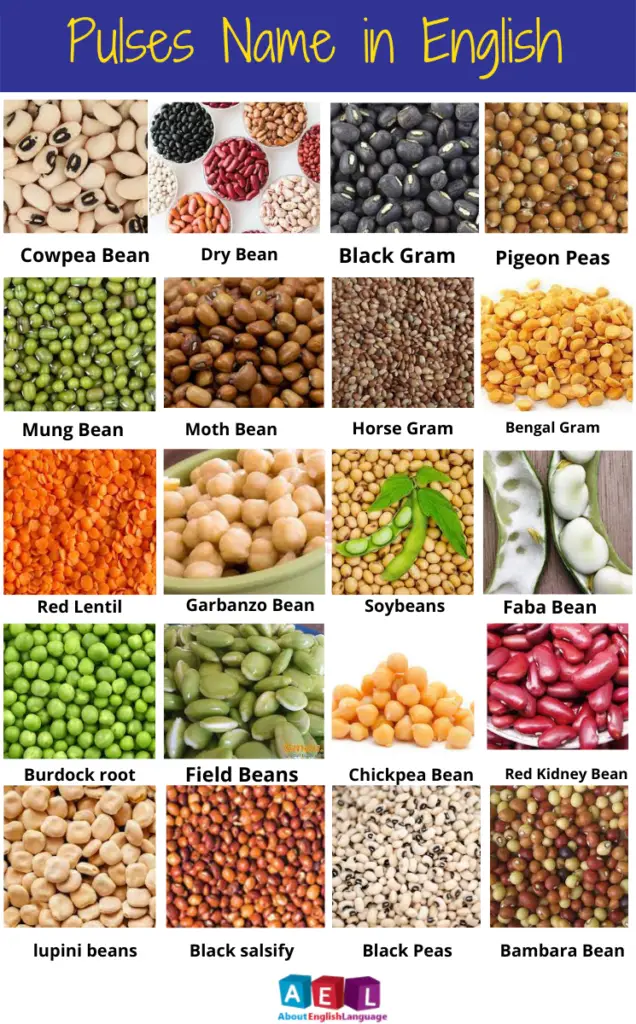Here in this topic, Pulses Name we discuss all the pluses with a complete list of pulses name pictures, and also their nutritious values.
Unlock the pulses name in English – Find the wide range of legumes, beans, and lentils, enhancing your culinary knowledge and cooking repertoire
Pluses Name:
A pulse is the seed of an annual legume, and it can be eaten in several ways. When pulses are dry and mature, they’re ready to be harvested and used in recipes.
Pulses Name in English infographic

There are numerous varieties of pulses that differ in terms of their colors, sizes, flavors, and shapes. Pulses are closely related to beans because they belong to the same family, the legume family also known as the Fabaceae family.
However, unlike beans, pulses aren’t grown for their edible seeds; rather, they’re planted specifically to harvest their edible pods or stems or leaves.
Pulses, also known as legumes, they include some of the most nutritious foods available, thanks to their high amount of protein iron, zinc, folate, and fiber as well as B vitamins. And fiber and low amount of fat when they’re eaten raw or cooked with little oil.
They’re also an excellent source of plant-based protein. There are around 20 different types of pulses, although only around 11 are commonly consumed worldwide.
With this guide on the names of pulses, you’ll be able to identify any type of pulse and use it in any recipe you like!
Pluses Name List:
- Cowpea Bean
- Dry Bean
- Black Gram
- Pigeon Peas
- Mung Bean (or Green Gram)
- Moth Bean
- Horse Gram
- Bengal Gram
- Red Lentil
- Garbanzo Bean
- Soybeans (Edamame)
- Faba Bean
- Green Peas
- Field Beans
- Chickpea Bean
- Red Kidney Bean
- Lupin
- Red Gram
- Black Peas
- Bambara Bean
- Black Eyed Beans
- Lima Beans
Pulses Name with Pictures:
Black Eyed Beans:
they may not be very popular, but black-eyed beans more than make up for their obscurity with their wide range of benefits, making them one of your best options when it comes to protein-rich pulses.
Kidney Beans:
Eat too many, and you may find yourself faced with some rather unpleasant digestive difficulties, especially if you have high blood pressure or are on dialysis.
Lima Beans:
Even though they’re known as limas, they’re not really a bean, but rather a seed that is encased inside a pod.
If you’ve ever prepared it by coating it in butter, salt, and pepper, you’re sure to love it; if you’ve never had it before, this is your chance to jump on board!
Mung Bean (or Green Gram):
The green bean, also known as mung beans, is one of the most commonly eaten pulses in South and Southeast Asia.
Its name refers to the fact that it is harvested before it matures and turns yellow. It’s important to maintain a good balance of cholesterol, and luckily for you, mung beans are an especially good source of soluble fiber. With this good fiber comes ease of preparation, because you don’t need to pre-soak them or wait a long time to prepare them.
Soybeans (Edamame):
Soybean is from the pea family. It is full of nutritious values like it is a good source of vitamins and proteins. It is very beneficial for curing cancer and soybeans have the ability to reduce the chances of prostate diseases. Read about pulses
